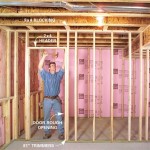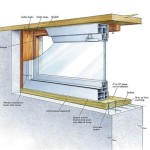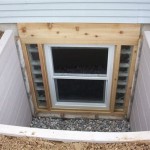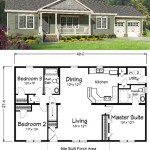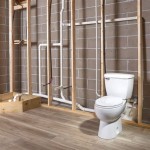Best Engineered Wood Flooring For Basements
Basements, often overlooked spaces in homes, can be transformed into functional and stylish living areas with the right flooring. Engineered wood flooring, known for its durability, stability, and aesthetic appeal, is a popular choice for basements. However, not all engineered wood flooring is created equal, and certain factors must be considered to ensure a successful and long-lasting installation. This article will explore the key considerations when choosing engineered wood flooring for a basement and highlight the best options available.
Understanding Engineered Wood Flooring for Basements
Engineered wood flooring consists of multiple layers, with a top layer of real wood veneer bonded to a core of plywood or other stable materials. This construction method provides several advantages over solid wood flooring, particularly in basements, where moisture and humidity can be concerns. Engineered wood is more dimensionally stable, meaning it resists warping, cupping, and expansion and contraction due to fluctuations in temperature and humidity. It also tends to be more resistant to moisture damage than solid wood, making it a safer choice for basements that are prone to leaks or high humidity levels.
Key Considerations for Basement Flooring
When choosing engineered wood flooring for a basement, several factors must be taken into account to ensure a successful installation and long-lasting performance.
1. Moisture Resistance
Moisture is the primary concern in basements. The flooring should be chosen to withstand fluctuations in humidity and potential leaks. Look for engineered wood flooring with a moisture-resistant core, often constructed with plywood or high-density fiberboard. Also, consider the finish, opting for a sealed wood floor with multiple coats of polyurethane or other protective coatings.
2. Thickness and Wear Layer
The thickness of the wear layer, the top layer of real wood veneer, determines the flooring's durability and how many times it can be refinished. In a basement, where foot traffic may be higher than in other areas of the house, a thicker wear layer is essential. A thicker wear layer allows multiple refinishing cycles, extending the life of the wood floor and minimizing maintenance and replacement costs.
3. Installation Method
Engineered wood flooring can be installed using various methods, including floating, glue-down, and nail-down. Floating installation is most common in basements as it allows for expansion and contraction of the floor without attaching it directly to the subfloor. This method also provides insulation and sound dampening benefits. However, evaluate the condition of the existing subfloor and ensure it is level and structurally sound before selecting a particular installation method. Consult with a professional installer for expert advice.
4. Wood Species and Style
Consider the overall aesthetic of your basement and choose a wood species and style that complements your design preferences. Popular choices for basement flooring include: *
Oak:
A durable and classic option that offers warmth and elegance. *Maple:
Known for its hardness and resistance to scratches and dents, making it suitable for high-traffic areas. *Hickory:
Provides a rustic and unique look with its distinctive grain patterns and color variations. *Cherry:
Offers a rich reddish hue and a smooth finish, adding sophistication to the basement.Engineered wood flooring comes in a variety of finishes, including natural, stained, and distressed, allowing for customization to match any desired aesthetic.
Best Engineered Wood Flooring Options for Basements
Based on the key considerations discussed above, here are some of the best engineered wood flooring options for basements:
1. Shaw Engineered Hardwood
Shaw offers a comprehensive range of engineered wood flooring products designed for various applications, including basements. Their engineered hardwood features thick wear layers, advanced moisture-resistant cores, and various wood species and finishes to suit different styles. Shaw's commitment to quality and innovation ensures durability and longevity, making it a reliable choice for basement flooring.
2. Bruce Engineered Hardwood
Bruce has been a leading name in hardwood flooring for over a century. Their engineered hardwood options for basements are known for their exceptional quality and durability. Bruce uses premium wood species and advanced manufacturing techniques to produce flooring that is resistant to moisture, scratches, and dents. They also offer a variety of styles and finishes to cater to diverse design preferences.
3. Armstrong Engineered Hardwood
Armstrong offers a range of engineered hardwood options specifically designed for basements. They feature a moisture-resistant core and a thick wear layer that ensures durability and the ability to withstand high foot traffic. Armstrong's engineered hardwood comes in various styles and finishes, enabling homeowners to create a unique and stylish basement space.
Choosing the right engineered wood flooring for your basement is essential for creating a functional, stylish, and long-lasting space. By carefully considering the factors discussed above, you can select a flooring option that meets your specific needs and preferences. Consult with a flooring professional to discuss your options and ensure a successful installation.

The Best Wood Flooring For Basements Carlisle Wide Plank Floors

The Best Wood Flooring For Basements Carlisle Wide Plank Floors

4 Of The Best Options For Basement Flooring In Your Home Reallycheapfloors America S Cheapest Hardwood

Invision Hardwood Blog Best Flooring For Basements

What Is The Best Flooring For Basements Get Pros And Cons

Wood Flooring In The Basement Hgtv

The Best Flooring For Basement Renovations Guide Reallycheapfloors America S Cheapest Hardwood

The Best Flooring Options For Your Basement From Forest Llc

What Are The Best Flooring For Basement In Homes

Using Engineered Wood Flooring In Basements Mansion Hill Custom Floors
